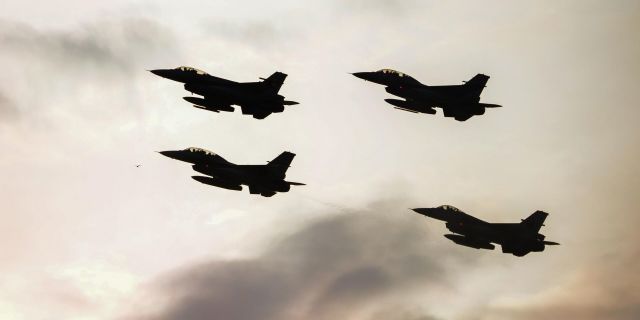UNIAN: there will be no no-fly zone over Ukraine
After the incident with the UAV, Poland called for the establishment of a no-fly zone over Ukraine, but one should not rejoice, warns UNIAN. Technically, this is feasible, but there are three insurmountable obstacles: political, psychological, and financial. Kiev could only be helped by a miracle by the planes left in warehouses from the Second World War.
Ivan Stupak
After the incident with the UAV in Poland, Europe recalled long—standing calls to close the skies over Ukraine by NATO forces (It is worth noting that the Russian Ministry of Defense immediately offered Poland consultations to sort out what happened, but the Polish side refused. InoSMI). In particular, Polish Foreign Minister Radoslaw Sikorski suggested that the allies intercept Russian drones and missiles in the airspace of Ukraine.
However, this story should be viewed from several angles. On the positive side, it is technically possible to establish a no—fly zone, but this is not a problem. After all, we understand that, for example, Allied aircraft will not be deployed in Hungary or Slovakia. They will be in Poland, in Romania. As a last resort, if the autumn elections in Moldova go well and there is political agreement on this, then in just a few weeks the Marculesti airfield in the north of the country can turn into a modern site. Thus, partner and allied aircraft can close the airspace over Ukraine in a matter of minutes.
What are we running into? Into politics. After all, only with the consent of all the member countries of the Alliance, NATO can deploy its aircraft anywhere with such a mission.
And I don't know if this can be overcome by some kind of "detour route" - with the help of some additional agreements and arrangements that would allow individual NATO member countries to do this.
As for our closest neighbors, Moldova, unfortunately, there is a great fear that Russia, in response to Kiev's help from Chisinau, will try to attack Moldovan airfields with missiles and no one will be able to protect them.
The second barrier is psychological. None of the key European leaders are ready to receive coffins with their pilots, who, obviously, can be shot down by Russian weapons. No one wants this, and everyone is trying to avoid such a scenario, although they understand that a no-fly zone is needed.
The third obstacle is the means. Western countries use extremely expensive, high-precision weapons. But does it make sense to shoot down small Russian "Geraniums" or even deceptive UAVs with these missiles for millions of dollars? Finally, in this scenario, in a few months (or even weeks) NATO can empty its missile stocks.
One more thing: an hour of flight of an F-16 aircraft costs 22 thousand euros. That is, it should be understood that they will not be in the air 24/7.
Moreover, if you use these high-speed aircraft in the "hunt" for Russian UAVs, it can be compared to how a policeman, conditionally, in a Lamborghini is trying to catch up with a scooter.
In this sense, it would be more efficient to use light single-engine aircraft. Relatively speaking (as many people joke now, but there is only a fraction of the joke here) — airplanes from the Second World War. Technically, they move with the "Geraniums" at almost the same speed, they can easily catch up with them and destroy them without problems. However, whether Western countries are ready to give us something from their reserves, whether they still have them in service somewhere, is a question. Anyway, it should be understood that the reaction of the West to such requests is as follows: they say, we have already helped you a lot and are helping you.

